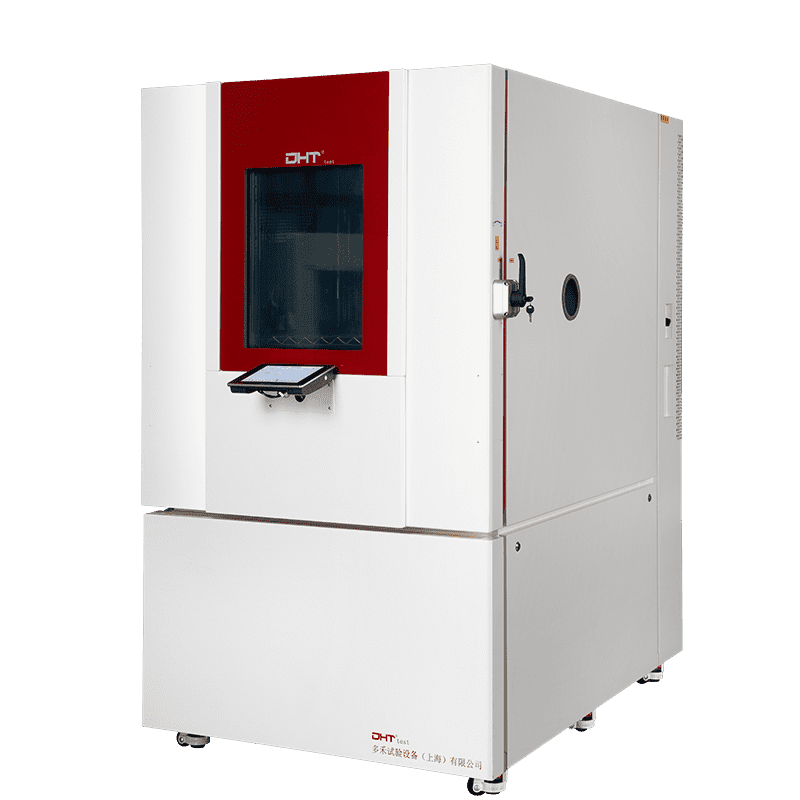Écrit par Robin
Ingénieur principal, Doaho Test (DHT®)
Avoid Costly Mistakes by Getting the Right Environnement Test Solution
In the procurement of DHT® comprend les exigences de haute fiabilité de la technologie aérospatiale et s'engage à fournir des équipements de haute qualité et des solutions techniques complètes pour des industries telles que l'aérospatiale, l'aviation et l'électronique., the Temperature and Humidity Chamber is one of the most fundamental and commonly used tools across laboratories, R&D centers, and manufacturing facilities. While it may appear straightforward to choose a chamber, the decision you make can significantly impact the reliability of your test results, the efficiency of your testing processes, and even the delivery timeline of your projects.
With numerous models and brands on the market, how can you select a chamber that truly meets your application needs? In this article, we walk you through seven essential questions you must ask to avoid common selection pitfalls and ensure long-term testing success.
What Are Your Actual Testing Requirements? Don’t Be Misled by “Overkill” Specs
Before comparing prices or being swayed by brand advertising, the first and most critical step is to define your actual testing needs. Ask yourself:
-
What temperature and humidity range do you need to simulate? Is it a conventional range or does it need to reach more extreme conditions?
-
What is the nature of your test samples—electronic components, plastic materials, or automotive parts?
-
What is the purpose of the testing—R&D validation, production screening, or Highly Accelerated Stress Testing (HAST)?
By answering these questions, you may find that some expensive features are unnecessary for your use case, while genuinely valuable capabilities are often overlooked.
Do You Understand the Real Impact of Heating/Cooling Rates?
Specifications like “3°C/min heating rate” or “1°C/min cooling rate” may sound like mere technical data, but they directly determine how long each test cycle takes. For high-volume testing or long-duration reliability testing, a few minutes per cycle can add up to days or even weeks of difference in throughput.
More importantly, is the chamber capable of maintaining temperature and humidity uniformity and stability during rapid transitions? These factors not only affect test efficiency but also determine the accuracy and repeatability of your data.
Is Your Laboratory Environment Compatible with the Equipment?
Buyers often focus solely on device performance while neglecting whether their test environment is compatible with the equipment’s installation and operation requirements. Consider:
-
Can the chamber pass through your lab doors or elevators?
-
Is your power supply adequate for high-load equipment?
-
Do you have proper ventilation or dehumidification systems to prevent condensation from affecting nearby instruments?
These “non-technical” details are often the most common pitfalls during final delivery and commissioning.
Do You Understand the Capabilities of the Control System?
The control system is the “brain” of a Temperature and Humidity Chamber. Its sophistication often determines user experience, automation levels, and data compliance. Evaluate:
-
Does it support programmable testing with multiple segments and cycles?
-
Can it provide remote monitoring, data logging, and network connectivity?
-
Is the control logic stable and compatible with third-party communication protocols?
A reliable and user-friendly control system can significantly improve testing efficiency while minimizing human error.
Have You Considered the Ease of Maintenance and After-Sales Support?
Purchasing the chamber is not the end—it’s the beginning of a long-term operation cycle. A well-designed chamber should offer:
-
Easy access to replaceable components like humidifiers, filters, and sensors
-
Prompt and professional technical support from the manufacturer
-
A stable supply of spare parts to avoid future downtime due to lack of replacements
Only a chamber with thoughtful design and strong service infrastructure can offer truly low cost of ownership in the long run.
Have You Evaluated the Real Operating Costs?
Beyond the initial investment, you should also consider the chamber’s lifecycle costs, including:
-
Energy consumption: Does the chamber support energy-saving modes or standby functions?
-
Water system management: Is it compatible with deionized or distilled water, or equipped with auto-refill functionality?
-
Consumable replacement cycles: Are the service lifespans of humidifiers, electrodes, and sensors clearly defined?
Beware of “low-cost entry points.” True cost-efficiency means stable performance with predictable maintenance even after five years of operation.
Does the Equipment Meet Industry-Specific Testing Standards?
Different industries have distinct compliance requirements for environmental testing. For example:
-
The automotive industry may require GB/T 2423.1 or ISO 16750 compliance.
-
Aerospace testing might call for DO-160 or MIL-STD qualification.
-
Medical device testing often demands traceable documentation aligned with FDA or CE standards.
Be sure the equipment you choose is capable of performing tests that meet these regulatory standards—this is critical for legal traceability and engineering reliability.
Final Thoughts: Choosing the Right Temperature and Humidity Chamber Means Choosing a Reliable Long-Term Partner
Purchasing a Chambre de température et d'humidité is not just a one-time transaction—it marks the start of an ongoing partnership. Beyond the technical specs, it’s crucial to assess whether the manufacturer offers deep technical expertise and long-term service capabilities.
As a trusted and experienced manufacturer in the environmental testing field, DHT® is dedicated to developing high-performance, highly reliable Temperature and Humidity Chambers tailored to customer needs. Whether you’re looking for a standard model or a fully customized testing solution, DHT offers end-to-end technical support and service coverage across the entire product lifecycle.
Still uncertain about which chamber fits your application? Bring these seven questions to a DHT® engineer—we’re ready to help ensure your next test is not only accurate, but also future-proof.
Les gens demandent aussi
Que dois-je clarifier avant de choisir une chambre de température et d'humidité ? Start by clearly defining your actual testing needs. Ask yourself:
-
What temperature and humidity range do I need to simulate?
-
What type of product am I testing—electronics, automotive parts, plastics?
-
Is the testing for R&D validation, production screening, or accelerated stress testing?
Avoid being misled by high-end specs you may not need. Instead, focus on features that truly align with your testing goals to ensure both performance and cost-efficiency.
Pourquoi les taux de chauffage et de refroidissement sont-ils importants dans le choix d'une chambre ?
Les taux de chauffage/refroidissement influencent directement la durée de chaque cycle de test, affectant à la fois le rendement et la productivité. Pour les tests de grande envergure ou de longue durée, une enceinte plus lente peut retarder des projets entiers. De plus, la capacité à maintenir une uniformité de température et d'humidité lors de changements rapides est essentielle pour l'exactitude et la répétabilité des tests. Ne vous contentez pas de regarder les spécifications—demandez comment l'enceinte fonctionne dans des conditions réelles de travail.
Quels sont les coûts cachés ou les pièges à éviter lors de l'achat d'une chambre ? Beyond the initial purchase price, consider:
-
Compatibility with your lab environment (power supply, space, ventilation)
-
Operating costs (energy use, water system, consumables)
-
Ease of maintenance and after-sales support
-
Compliance with your industry’s testing standards
These factors often determine the long-term reliability and total cost of ownership. Choosing a chamber that checks all these boxes will save you from costly delays and compliance issues down the line.


